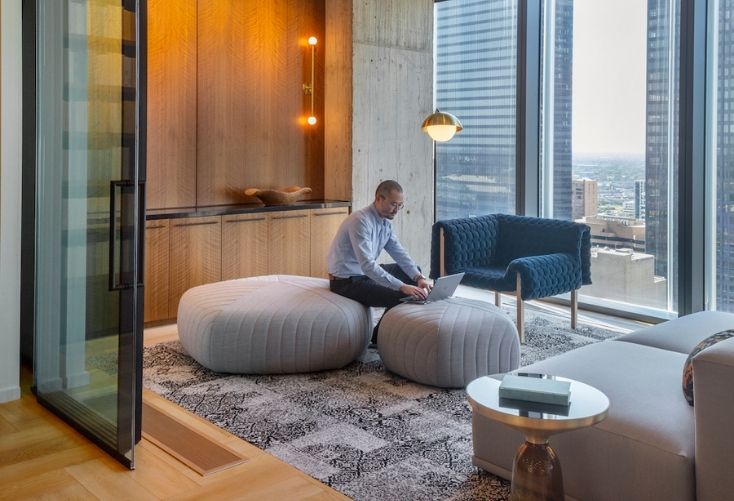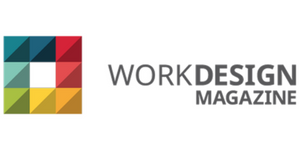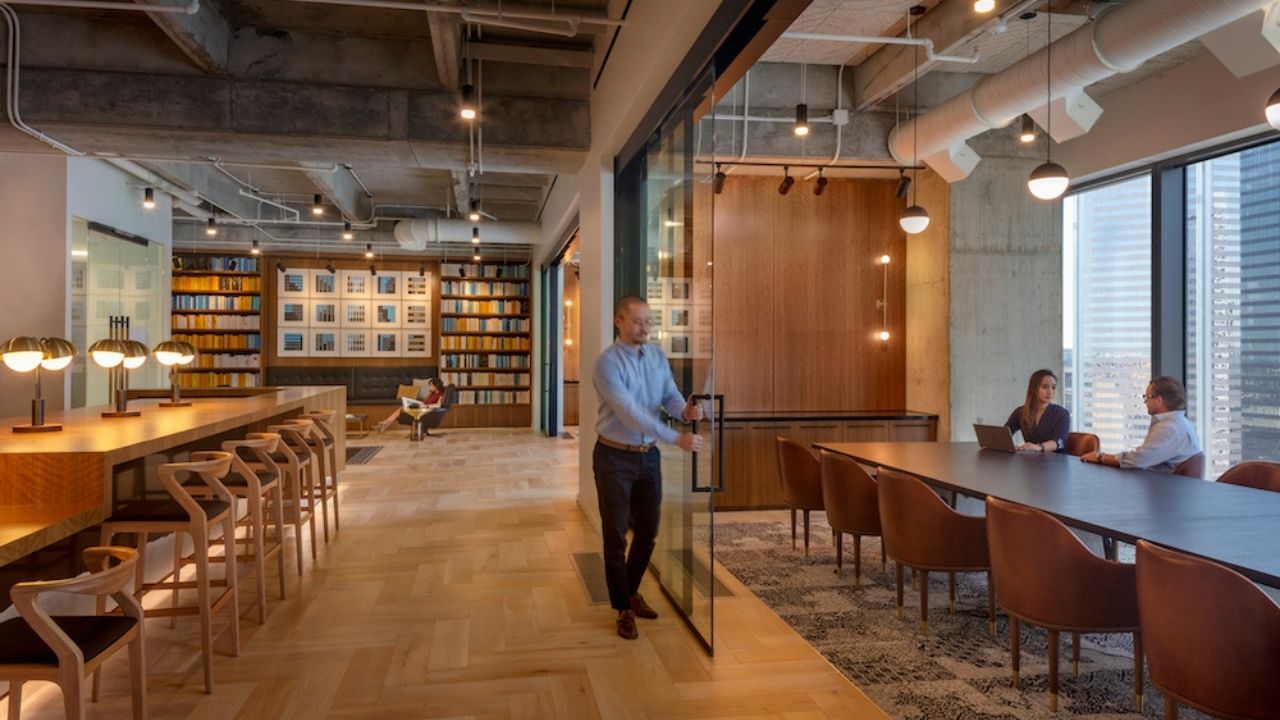- Flexibility in policies, procedures, and in the physical workplace itself are critical to an organization’s long-term vitality.
- The physical workplace is now the new frontier for characterizing true flexibility.
- Amenity-rich base building components, landlord-provided service functions, and even flexible lease arrangements are all part of a new paradigm for defining best-in-class office buildings.
This article was written by Larry Lander and was originally published on Work Design Magazine.
If the ensuing two years have taught us anything, we know that flexibility in policies, procedures, and in the physical workplace itself are critical to an organization’s long-term vitality. If there is any good news in a pandemic, we have learned that good ideas have been amplified—good ideas we had two years ago before we even understood what a pandemic was.
Organizations have embraced different levels of hybrid working: People in the office, people working remotely, and combinations of the two. And as the impact of the pandemic has ebbed and flowed, those approaches have often been adjusted, modified, or discarded. Successful organizations have learned it’s not so much a clever solution that solved the riddle of what to do, but more a willingness to remain flexible, to adjust on the fly, and an attitude that treats specific strategies as experiments. Some are good ideas, some less so, and some require wait-and-see. The resilient and flexible organization may win the day.
As this new way went from weeks to months (to years!), organizations have implemented protocols and utilized tools to identify where employees are physically located, how they communicate with each other and with customers, and how to effectively accommodate remote workers for every meeting.
The physical workplace is now the new frontier for characterizing true flexibility.

One’s every need
The most compelling workplaces employ the wide variety of spaces individuals may need throughout a workday with protocols that allow all employees to use all the spaces. The most exciting trend in this arena is the move to activity-based working where effective solo seats for heads down focus work, outfitted collaborative spaces that support hybrid teams, and team spaces that support both intense brainstorming and deep focus are all part of a menu of spaces available for all office workers.
Combined with a policy that encourages employees to easily move around to find the best setting for whatever they are doing, this new workplace provides real flexibility in combination with when and where to work and with policies and protocols that encourage it.

Easy physical change
An effective workplace is one that can be physically reconfigured by the people who use it. Starting with a modular approach to all the building systems including the planning module itself, but also the ceiling systems like lighting and sprinklers, building systems increasingly supported through the floor like HVAC, data, and power, and the walls and furniture that live in the zone between the floor and ceiling—all working together in a way that can allow the users to easily tailor the space to their very specific needs. A team space can be created from solo seats, meeting rooms can reconfigure into private offices as a day can go from intense brainstorming to heads-down work, and it’s the users themselves that can make the change because the systems are planned to allow it.
The new goal is physical change overnight at no cost to the organization.

Flex with the organization
The number of employees “in the office” continues to be dynamic for many organizations. Driven not only by pandemic response, but increasingly by employee choices of when and where to work, the workplace needs to accommodate many employees with effective places to collaborate, socialize, and focus, but also needs to work with just a few employees without feeling like the Saturday Syndrome: “No one is here, and I wish I didn’t need to be either!”
Amenity-rich base building components like food, fitness, and connections to the neighborhood and the outdoors, landlord-provided service functions—reception and security, “client-ready” meeting and conference spaces, social and gathering spaces, even flexible lease arrangements that can allow a company to take more or less space at a moment’s notice—these are all part of a new paradigm for defining best-in-class office buildings.
The pandemic will not be the last event to upend whatever our definitions are of business as usual. That itself is a lesson of the pandemic. The course of the current pandemic is still unknowable and now we all recognize it may be an endemic episode. Certainly, there may be other potentially impactful long-term trends including climate change, globalization, and inequality. Each of these pose their own challenges to work as we have known it and as this new era of uncertainty is upon us, we will need workplaces to respond to this uncertainty with solutions that create compelling settings for organizations to be successful and allow their most valuable asset—their people, to thrive and be their best.


 Dr. Gleb Tsipursky – The Office Whisperer
Dr. Gleb Tsipursky – The Office Whisperer Nirit Cohen – WorkFutures
Nirit Cohen – WorkFutures Angela Howard – Culture Expert
Angela Howard – Culture Expert Drew Jones – Design & Innovation
Drew Jones – Design & Innovation Jonathan Price – CRE & Flex Expert
Jonathan Price – CRE & Flex Expert












